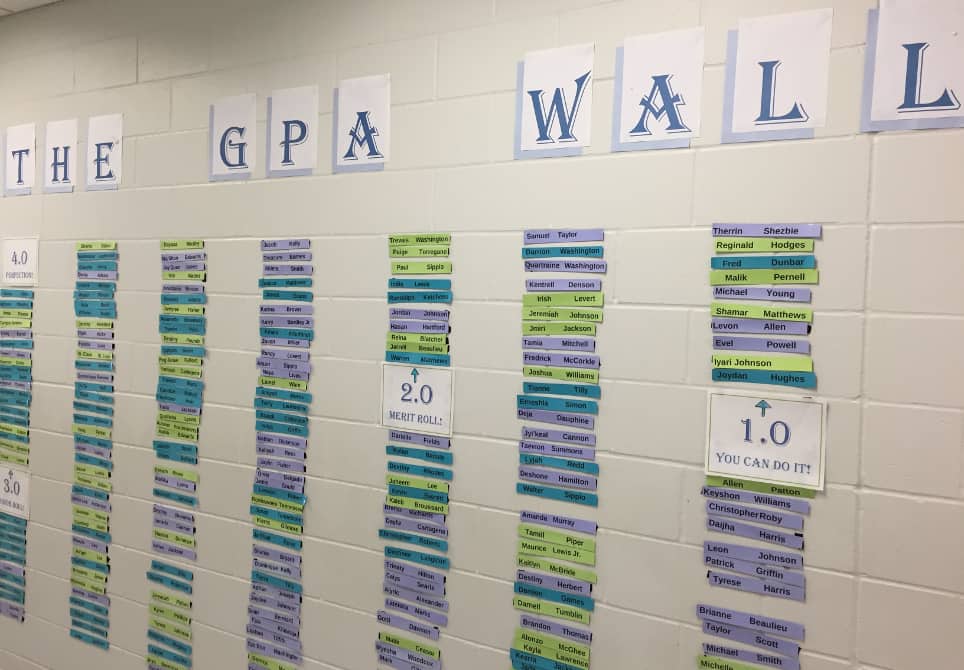Motivating and Monitoring Performance: 6 Recommendations

This is the 6th in a series on the use of leaderboards and other strategies to encourage students to reflect on their performance.
We began this blog series asking the question: “to leaderboard or not?” We’ve looked at the subject of performance monitoring: private and public, in formal and informal settings, for individuals and teams, and we’ve drawn six conclusions:
- Measure what matters
- Be timely and relevant
- Honor different motivational profiles
- Encourage effort
- Avoid shame
- Blend competition and cooperation
Measure What Matters
“If the intent is to motive students and create peer accountability,” said New Tech Network’s Tim Presiado, “if you use only summative course measurements (their A-F letter grades in each course or GPA) for this, you are missing the bigger picture, as schools need to help students uncover and assess their diverse set of talents and skills that they need to be productive members in a project-based world.” Give careful consideration to what you are measuring, as you will get more of it. Evidence presented in this blog series suggests looking at cohort growth versus a minute set of skills for each student, as it better enhances motivation for learning.
Be Timely and Relevant
“The key ingredient seems to be expediency in getting them up on the wall and the ways in which the teachers and administrators reference them,” said Shawn Rubin, Highlander Institute. Rubin thinks posted results lose power if there is a delay in posting them or if they get stale. There is a strong body of research of feedback that suggests that the sooner data are presented, the more impact they will have. Leaderboards provide another opportunity for data displays and analysis. For them to be effective, they must be expedient.
The ‘timely and relevant’ rule also applies to the dashboards that Presiado discussed in blog #3. Creating fancy data visualizations isn’t of much value if the data isn’t current and important.
Honor Different Motivational Profiles
Eduardo Briceno, CEO of Mindset Works, stated, “This type of competition (leaderboards) also tends to be most motivating for people who see themselves as “contenders”who are within striking distance of “winning.” The farther down the board you go, the less motivating it would be, to a point where it could actually become demotivating (“I’m so far out of the running, why even try?”). It could lead low scorers to disidentify with the activity, and if the competition is seen as important, it could lead to stereotyping (of oneself or by peers) as a loser. However, if the “winners” are highly variable (so that everyone has a good chance of being in the lead at some point) and the outcomes are seen as under the control of the participants, this risk would be greatly diminished.
Schools should allow for students to volunteer for class or building competitions as well as opt in to daily performance leaderboards. The intent of leaderboards is to motivate performance, so different techniques will be needed for different motivational profiles.
Encourage Effort
Ben Daley, now chief academic officer at High Tech High (HTH), tells us that “when I taught a robotics class at HTH, I developed around 10 mini-projects or assignments that students needed to complete, things like ‘create a robot that can follow a wall down the length of our classroom.’ Different students completed these assignments at their own pace. I created a chart I put up in the classroom and when students had a working robot, they would show me and I would sign off on that “competency.” My inner Alfie Kohn alarm bell went off, and yet it helped me keep track of what was going on and, to be honest, it did push some groups to get it in gear.
“I tried to balance the motivation/humiliation issue by keeping that more subtle. It was obvious to students who were behind and I tried to avoid making a big show. So, it strikes me that such practices, as with most, are very context dependent and small shifts in language, tone, and behavior can make a big difference.”
Avoid Shame
In blog #3, we were warned by Dr. Pamela Cantor, Turnaround for Children CEO, that “Children who feel shame are less likely to take risks and tackle difficult academic material for fear they will fail. We want children to feel safe and supported in school because then they are more likely to engage in their work and gain confidence to persevere as learners.”
The business world can again provide us with an example of best practice. A sales organization used a leaderboard that ranked all salespeople based on the dollar value of their confirmed sales. Some of the most competitive sales people were motivated by this, but many new hires and most of the solid middle-band performers found it to be extremely demoralizing. More importantly, it encouraged managers, whose compensation was also tied to the ranking of their sales people, to “throw out” anyone who didn’t rapidly move up the leaderboard. In addition to the negative effects this had on many salespeople, another unfortunate side effect was the loss of stellar talent, who lacked the drive to aggressively compete individually yet may have excelled in a team-based selling model or made great sales support staff (always in high demand).
As Cantor clearly states, “Shame is toxic to positive outcomes for children.” (And adults.)
Blend Competition and Cooperation
In blog #4, we learned about the informal learning space FIRST Robotics and how it hosts competitions that teach gracious professionalism and cooperation; teams helping each other even as they compete. Aside from very proactively cultivating a healthy culture around competition, they explore innovative ideas like having the winner’s team score by a multiple of the loser’s team score.
Alan Gershenfeld, game developer E-Line Media said, “Leaderboards for activities like exercise programs where friends/family/co-workers all opt-in to compete on staying on their exercise regimen is an example of a model where competition really helps motivate everyone. But he cautions, “With something as sensitive as competition in education, context, skillful facilitation and thoughtful rules/scoring matter.”
Wow, that was a deep dive. A few penguins on the wall (charting progress in ST Math) and a GPA ranking spurred what became a seven part series with lot of expert commentary. We appreciate all of our contributors and hope you’ve learned from their advice. With more technology and more games, how and when we post public results is bound to be a live issue for years to come.
Have advice on leaderboards or performance monitoring? Questions? Examples? We’d love to hear from you. Comment below or email our [email protected].
For more, see:
- Measuring and Recognizing What Matters at Work
- To Leaderboard or Not: The Art of Motivating and Monitoring Performance
- Reasoning Minds Deserve Thoughtful Progress Monitoring
Stay in-the-know with all things EdTech and innovations in learning by signing up to receive the weekly Smart Update. This post includes mentions of a Getting Smart partner. For a full list of partners, affiliate organizations and all other disclosures please see our Partner page.








0 Comments
Leave a Comment
Your email address will not be published. All fields are required.